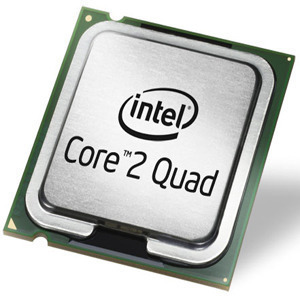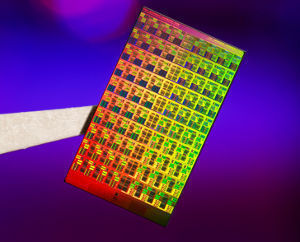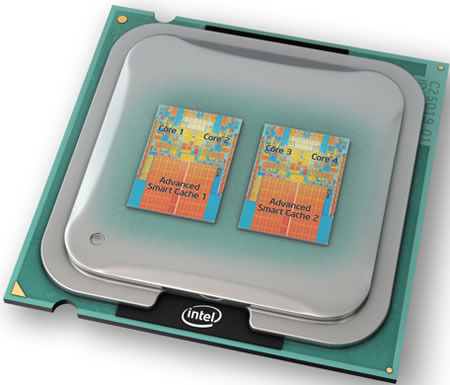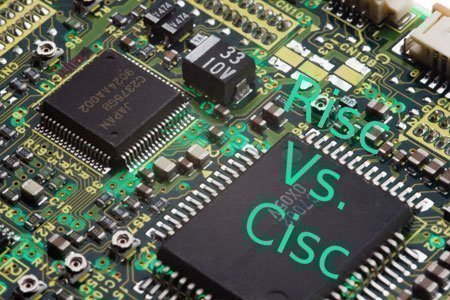EM64T (Extended Memory 64 Technology), now known more commonly as Intel 64 or the x64 (that is when including AMD64 too), is a 64 bit superset/extensions that central processing units (CPUs) process. It is widely used in Intel’s processors, including Pentium 4, Pentium D, Pentium Extreme Edition, Celeron D, Xeon, Pentium Dual Core, and Core 2 processors.
Originally codenamed Yamhill, the EM64T was first “announced” in 2004 when the Intel chairman at the time, Craig Barrett, announced that it was underway. This technology went through quite a bit of name changing, as in the Intel Developer Forum (IDF), it was known as CT (possibly standing for Clackamas Technology, although it is uncertain). It was later referred to as the IA-32e and finally in March 2004, it was officially announced as the EM64T. However, in late 2006, Intel began to lessen the use of the name EM64T and began to refer to it as the Intel 64, potentially to rival AMD64.

The EM64T was originally implemented within the E revision (Prescott) of Pentium 4, supported by i915P (Grantsdale) and i925X (Alderwood) chipsets in June 2004. It is assumed that this occurred so as to compete against the Opteron and Athlon 64 lines, also known as the K8 core, from AMD. In Intel, the first processor that adopted the Intel 64 technology was Nocona (codename for a Xeon). Also, considering that the Nocona Xeon was based on Pentium 4, Pentium 4 also supports Intel 64 technology, although it was not initially enabled in the Prescott design. Intel officially launched the EM64T in desktop processors in the N0 Stepping Prescott-2M. This revision also included an eXecute Disable (XD) support for Intel 64 and remains included in the current Xeon (codename Irwindale). The first Intel 64 for the mobile processors is the Merom of Core 2 processor released in July 2006. Unfortunately, none of the previous versions of the mobile processors supports the CPUs.
EM64T Advantages
Only 64 bit operating systems can utilize EM64T. Thus, 32 bit operating systems like Windows XP cannot be run under regular IA32 mode.
- 64 bit allows an installation of up to 16 EB (exabyte) of RAM. However, current Celeron D, Pentium 4, and Xeon CPUs have 36 address lines, which can support 64 GB of RAM, while Xeon DP CPUs can hold up to 1 TB (terabyte).
- As all 64 bit registers still use the same division scheme, they can also conduct 8 bit operations.
- RIP, the new 64-bit instruction pointer, has been created in place of EIP, the one for the 32-bits, along with a new RIP-relative addressing.
- SIMD instructions have 8 new registers. The CPU has 16 64 bit MMX registers in 64 bit mode.
- XMM registers are now 16 rather than the previous 8 and SSE floating point operations use them.
- Only the FPU registers are 80 bit wide, while the rest of the registers and instruction pointers are now 64 bit wide.




Kane
I have an EM64T chipset, I installed windows 7 64bit, but why is it that my RAM is limited to 3.25 GB just like when I still had Windows 7 32 bit installed?
I also don’t see this memory remapping thing in the CMOS…
muhammad suleman
I have an EM64T chipset, I installed windows 7 64bit, but why is it that my RAM is limited to 3.25 GB just like when I still had Windows 7 32 bit installed?
I also don’t see this memory remapping thing in the CMOS…
beerbaron23
That’s because Microsoft took shortcuts to keep up as both Linux and Mac OSX were very much a head. Hence Windows 7 64bit does not support the full 64bit instruction set at all, but merely is compatible to a degree. You will have to look it up yourself as it’s complicated to explain and it works differently then 64bit architecture should IE: it does not use the full 64bit arch but mixed the Kernel Space and user space together then what Intel and AMD designed them to function as (separated address space for OS and Apps).
Linux in 2001
BSD in 2003
Mac OSX 2009 (2005 Partial)
Microsoft only finally coded a fully functional 64bit OS in Windows 8.1 (2013)